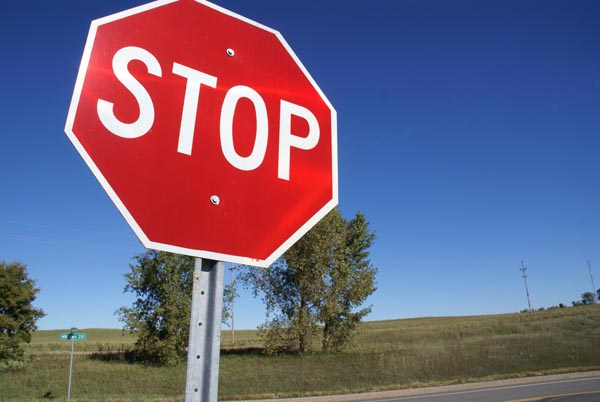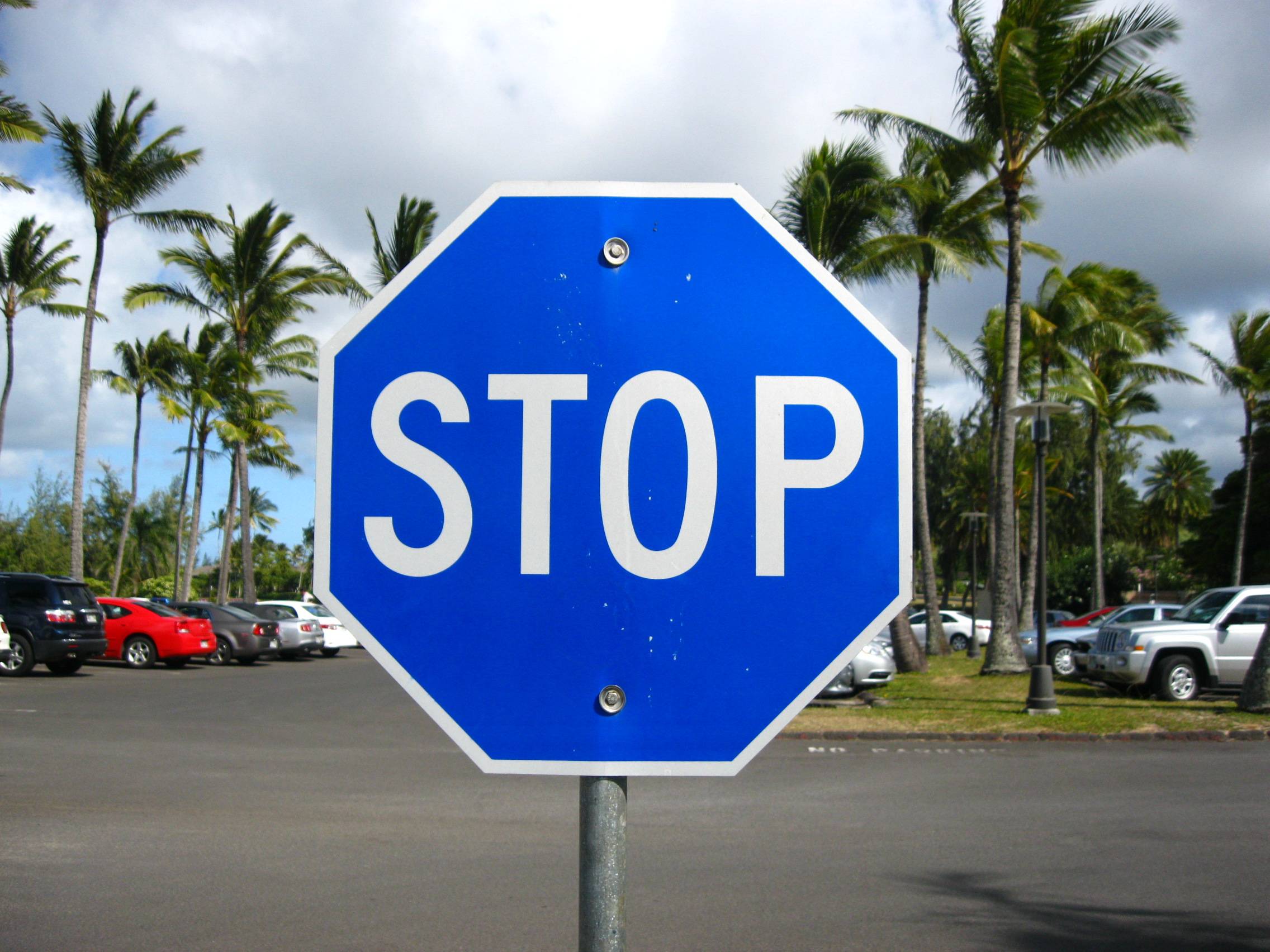They Blue It

Ask enough people to describe a stop sign and you’ll get some pretty common answers: it has the word “STOP” (at least in the United States) in white lettering; it has eight sides; and of course, it’s red. Everyone knows that.
Let’s focus on the color. Stop signs weren’t always red, even though early urban planners wanted them to be. As the New York Times explained, the idea that “red means stop” predates stop signs, but until the 1950s, you would frequently see yellow and black stop signs like the one below. The reason was a practical one — until 1954, the science behind pigmentation was a limiting factor. Simply put, we didn’t know how to make red signs retroreflective, which meant if you were driving at night, you’d not see a (red) stop sign. Yellow paint, though, didn’t have that drawback. The stop sign below, via an auction site (sorry, it’s already been sold), was used in Milwaukee in the 1920s, and as you’ll note, it’s not red.

But the Times further notes, since then, stop signs have gone red. It’s the law, to some degree. In the U.S., the Federal Highway Authority publishes something called the Manual on Uniform Traffic Control Devices which provides rules for all sorts of traffic signals, including stop signs. And if you look up the design specifications for the stop sign (here’s a pdf if you need proof), you’ll see that the rules say that the sign has to be red (with white letters/border) throughout the United States.
But if you drive around the U.S. enough and visit enough states, sooner or later you’ll see this:

In case you can’t tell, that’s a blue stop sign. It looks just like a normal red stop sign — eight sides, white border, white text yelling “STOP” — except that where one would expect to see red, there’s blue instead. They’re real. There are a bunch of them on Google Images, if you want to do a search (just click here) you’ll see that almost all of them (the non-cartoon ones at least) are in Hawaii.
The reason: Hawaii’s traffic code. As the Honolulu Star-Bulletin reported, the state traffic law has a section which deals with the “display of unauthorized signs, signals, or markings.” That section specifically bars the display of any “sign, signal, marking, or device which purports to be or is an imitation of or resembles an official traffic-control device or railroad sign or signal” by a private person or entity. The law was likely intended to prevent homeowners or the like from putting up stop signs near their property. But the law had a (likely) unintentional consequence: it appeared to regulate large parking lots and private roadways.
That caused a big problem for these big venues. Say, for example, that you’re in charge of a mall parking lot — private property — and you don’t want your patrons driving into one another. Because of that statute, some figured, it may be better to err on the side of caution and go without stop signs. But not having appropriate signage causes a different problem — you still need a way to tell drivers to stop. Enter the blue stop sign. It clearly communicates to drivers that they need to stop, in order to not get into an accident. And it also clearly shows that this isn’t a typical, municipal stop sign. After all, everyone knows that a “real” stop sign is red.
At least, that’s how the blue stop signs likely came to be. It’s not entirely clear whether regular stop signs are forbidden — indeed, most shopping centers in Hawaii use typical, red stop signs — and when the Star-Bulletin asked the Honolulu authorities about the issue (in the article linked above), the city’s Department of Transportation Services replied that “there is nothing to prevent such signs from being red.” So at this point, the blue signs are likely cultural inertia. But they’re still pretty cool.
Bonus Fact: The person most often credited for developing the stop sign, William Phelps Eno (1858-1945), also developed the one-way street, the traffic circle, pedestrian crosswalks, and many of the traffic regulations we commonly use today. But there’s one thing Eno never did — per Wikipedia, he never learned to drive.
From the Archives: Hawaii Dollars: The special dollars you could only find in Hawaii (during World War II, that is).
Take the Quiz: Name the countries closest to Hawaii.
Related: The closest thing I could find to a blue stop sign. Most college basketball fans will never, ever buy this.
